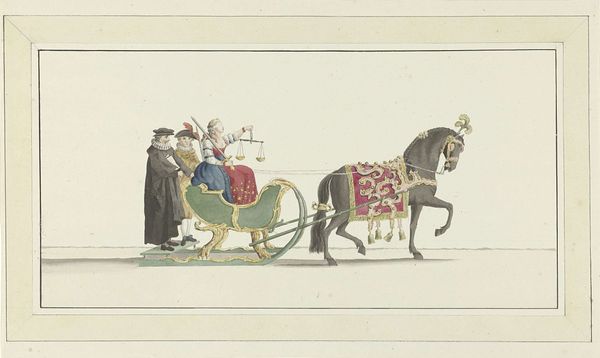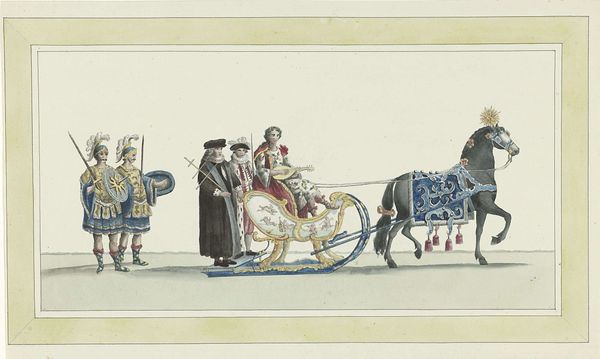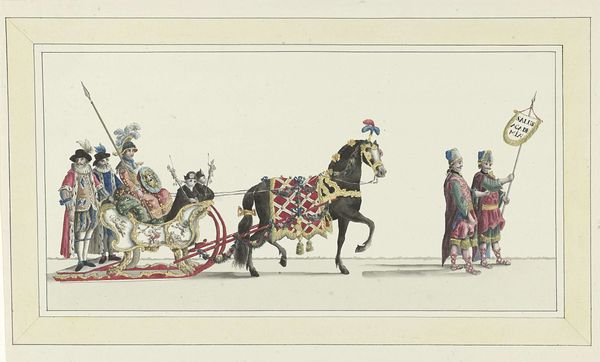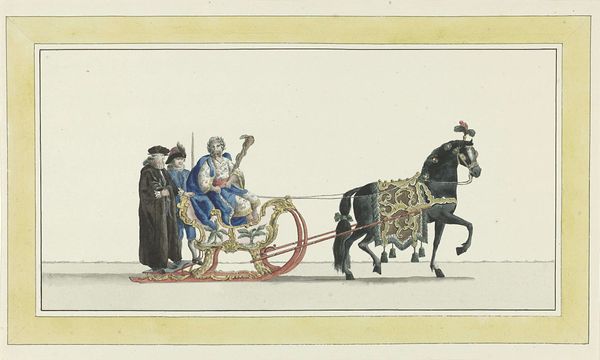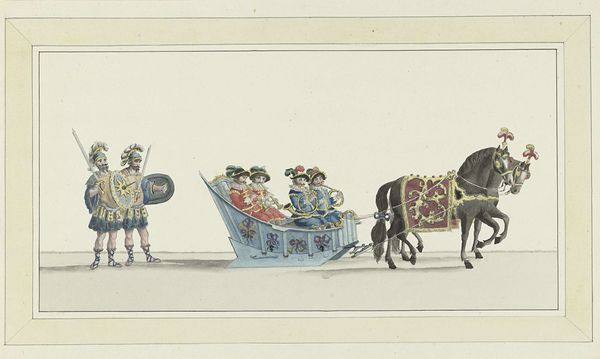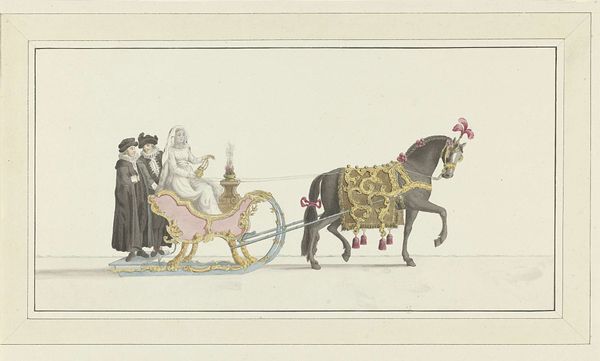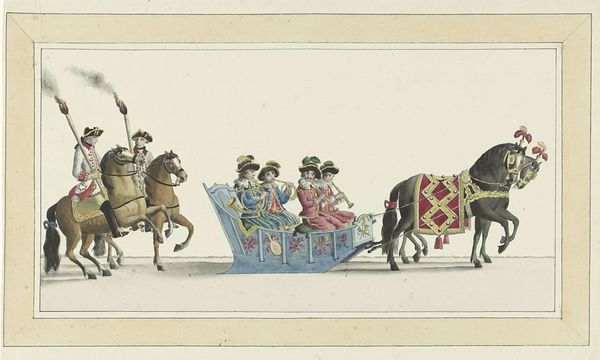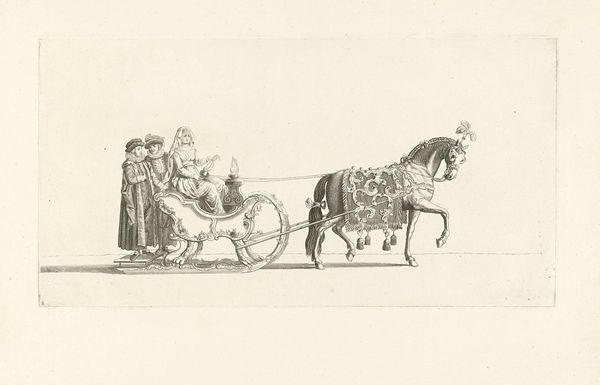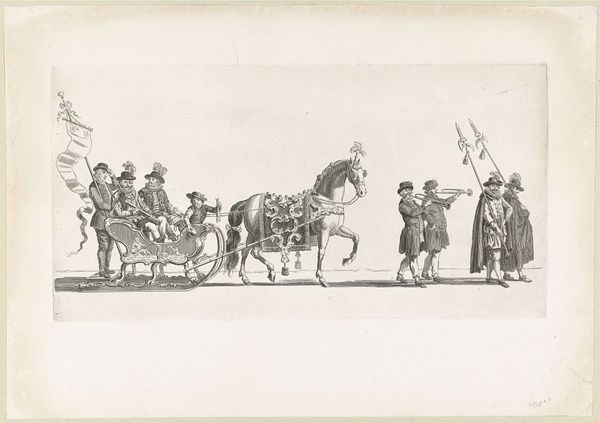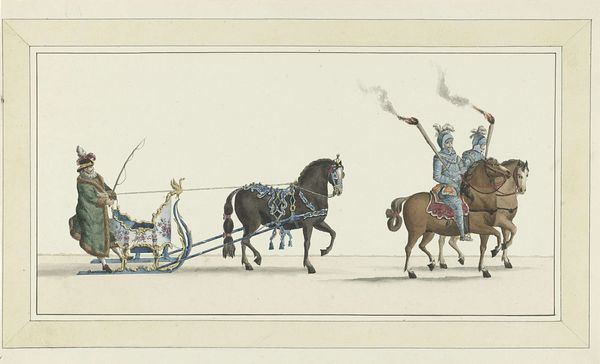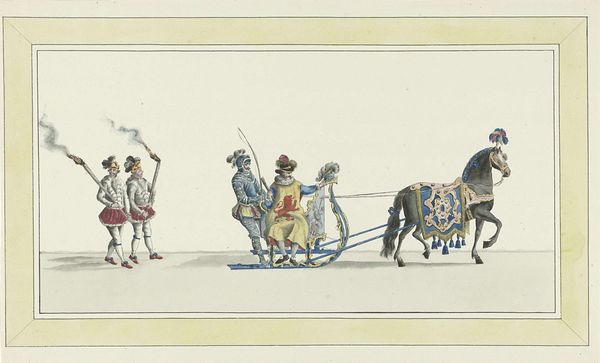
Dimensions: height 300 mm, width 509 mm
Copyright: Rijks Museum: Open Domain
Curator: This is Abraham Delfos's "Zesde slede," or "Sixth Sleigh," a watercolor drawing from 1776, housed here at the Rijksmuseum. It depicts a winter procession. Editor: My first thought? Lavish. The ornate sleigh, the meticulously decorated horse… and the stark contrast with the torchbearers dressed in such austere, dark clothing. What can you tell us about this kind of historical display? Curator: Winter processions like this were elaborate displays of civic pride and power in the Dutch Republic. Wealthy citizens and members of social clubs participated in themed sled races and parades. Delfos’s rendering captures a very specific performance of status. Editor: It’s all surface though, isn’t it? A meticulously constructed facade of wealth. I'm wondering about the making of this drawing itself – watercolor, a very precise medium. There's so much detail in the decorations, even the horse tassels. What kind of labor went into all this creation – and, to what end? Curator: Well, the aim would be to represent a key facet of Dutch society – public spectacle. Delfos likely aimed to capture the celebratory spirit and contribute to a visual record of the social elite at leisure. Editor: It’s not really ‘leisure,’ is it? All those involved had to carefully rehearse, to source or create costumes and sledges. The working people who produced that splendour – carpenters, tailors, stable hands…are missing. Curator: Those celebrations would, undoubtedly, create opportunities and income for local artisans, laborers and businesses to showcase skills and services for a noble class. Editor: Yet that whole power dynamic is neatly swept under the rug of ‘festivities,’ isn’t it? Even now we discuss Delfos rather than the skilled, unnamed people who made these winter festivals *happen*. I find myself asking, whose history are we really seeing here? Curator: It's a fair question, and I would propose that we use the artwork as a catalyst to reflect upon the social and material conditions surrounding its creation and reception. It may not fully reveal the stories of every individual involved, but it can spark critical reflection about historical representation and how it serves certain socio-political needs. Editor: I’m happy with that, but it also highlights the value of delving deeper, searching beyond the visual glamour, and seeking an understanding of all the hands that contribute to such public displays, regardless of acknowledgement or celebration.
Comments
No comments
Be the first to comment and join the conversation on the ultimate creative platform.
